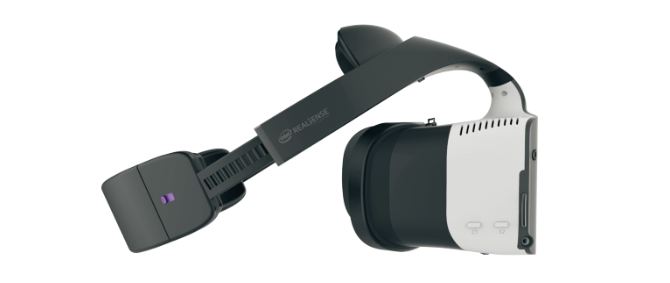This Wireless VR Headset Is Impressive, But Don't Get Too Excited Yet
Intel also outlines what it calls "merged reality."
Chip-maker Intel today announced its own virtual reality headset--and it stands out from competitors Oculus Rift, HTC Vive, and PlayStation VR in a major way. However, Intel won't sell this to consumers.
As reported by GameSpot sister site CNET, the new device is called Project Alloy and one of its biggest points of differentiation is that it's completely wireless.
Intel CEO Brian Krzanich introduced the headset and the concept of "merged reality" today during the Intel Developer Forum. "Merged reality will be one of those fundamental shifts that's going to redefine how we work, how we're entertained, and how we communicate," the executive said. Skip to around 48 minutes in the video above to see Intel's introduction to Project Alloy.
What is merged reality? According to Krzanich, "It's a [world] that feels as much real as it does virtual. And you can interact with it. Where things from the real world can come into the virtual world and vice versa."
Project Alloy is only a prototype. During the stage show, Intel demonstrated how a person could walk around a basic virtual space and interact with objects using their own physical hands. CNET attended the event and reported that, although everything went completely to plan, it was impressive.
"While the presenter struggled a bit, the headset's integrated Intel RealSense cameras let him bend each of his fingers in virtual reality, push a lever, and use a real-world dollar bill to carve a virtual golden statue spinning on a virtual pottery wheel," CNET reported. "Rival cordless headsets like Microsoft's HoloLens and the Meta 2 are still struggling to track your hands, so the demo seemed reasonably impressive."
No need for VR controllers, it seems: Intel's Alloy tracks your fingers as well. #IDF16 pic.twitter.com/m5kt62zrkR
— Sean Hollister (@StarFire2258) August 16, 2016
Intel does not plan to sell Project Alloy to consumers. Instead, the company is looking to sell the technology to partners, but not until the second half of 2017 at the soonest. There was no mention of a price or any partners for Project Alloy, however.
Oculus Rift, HTC Vive, and PlayStation VR are all tethered devices, at least in their current form. This might be because making a believable virtual world requires a lot of CPU and GPU power.
For more on Project Alloy and merged reality, you can read this in-depth blog post from Krzanich.

Got a news tip or want to contact us directly? Email news@gamespot.com
Join the conversation